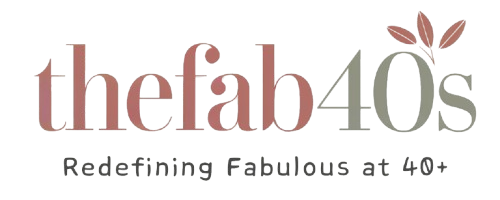Kickstart Your Freelance Career: My Top Tips
Starting a freelance career is both thrilling and scary. I’ve learned that to succeed, you need more than just a leap of faith. You must plan carefully and stay disciplined.
Freelancing has its perks, like setting your own hours and earning as much as you want. But, it also has downsides, like not knowing when you’ll get paid and missing out on benefits.
In this freelance career guide, I’ll share my personal tips. They helped me grow from small, unpaid jobs to big projects worth up to $1,000. Over four years, my projects have varied from $250 to $2,000. Now, I charge about $100 an hour for web and mobile solutions.
If you’re new to freelancing or want to improve, my advice can help. Remember, it’s important to relax and enjoy the ride as you start your freelance journey.
Understanding the Pros and Cons of Freelancing
More and more people are choosing to work as freelancers. In fact, freelancers make up 39% of the workforce, as Upwork research shows. It’s a big decision, and knowing both sides is key before starting a freelance career.

Freelancing has its bright spots. I can set my own hours, which means I work as much or as little as I want. This freedom lets me take on different projects with various clients. It’s exciting to build a diverse portfolio and grow my income without limits.
Plus, I can find jobs all over the world, not just locally. This opens up a world of opportunities.
- Flexibility in scheduling
- Unlimited income potential
- Opportunities to work on diverse projects
- Ability to work from almost any location
But freelancing isn’t all sunshine. Money worries are a big issue. About 10% of freelancers might find it hard to get loans because of their variable income. Also, I have to pay for my own office costs, like tech and health insurance. This can be very expensive.
“I often find myself overwhelmed by the responsibilities of networking, marketing, and managing my freelance business operations.”
Working alone can also take a toll on my mental health. It might make me feel lonely or anxious. The uncertainty of when I’ll get paid and the stress of finding new work are big challenges. To overcome these, I need to follow some solid freelance business tips.
Understanding the pros and cons helps me decide if freelancing fits my goals and values.
Identifying Your Freelancing Niche
Finding the right niche is key for a successful freelance career. Choosing a specific area helps me focus and stand out. It starts with knowing my skills and interests and seeing what the market wants.
Research is a must. I check where my skills match market needs. For example, the FinTech market and Web 3.0/Metaverse are booming. They offer great growth and money, making them great choices.
When I think about freelance business basics, focusing helps with managing projects and setting prices. Being specific, like in content strategy or SEO, lets me charge more. This shows my value in a competitive market.
Specializing makes me the first choice for clients. By showing my expertise and being seen in my niche, I get more referrals. This leads to lasting client relationships. Clients know exactly what I offer, making it easier to find the right projects.
- Assess skills and interests
- Research market demand
- Identify high-yield niches
- Focus on industry-specific or service-specific areas
Choosing a niche shows my passions and meets client needs. By matching my interests with market demand, I’m well-positioned in the freelance world.

How to Start Freelancing Successfully
Starting a freelancing career is both thrilling and tough. It’s important to think about what you love and what’s in demand. Finding the right mix can help you start strong.
Finding Your Passion and Skills
Discovering your unique skills and passions is key. I found that using my strengths makes me more productive and happy. Here’s how you can do the same:
- Assess your skills: Make a list of your strengths and talents.
- Identify your passions: Think about what you love and what keeps you interested.
- Combine both: Find ways to use your skills for your passions.
Researching Market Demand
Knowing what’s in demand is vital. I used job boards, social media, and forums to find out. This helped me adjust my services to meet client needs. Here are some tips for research:
- Monitor job boards: Keep an eye on trending jobs.
- Engage with communities: Join forums and groups in your field.
- Analyze competition: See what successful freelancers offer and how they market.

Using my research to guide my actions has been rewarding. Knowing my passions and the market helped me create services clients love. This led to lasting success.
Creating a Comprehensive Freelance Portfolio
Building a strong freelance portfolio is key. It shows off my best work and proves I’m skilled and ready for work. It’s a chance to share my unique style, so I pick projects that speak to potential clients.
Selecting Your Best Work
I choose 3 to 5 top projects that show my expertise. This approach helps me stand out and attract more clients. Having a few finished projects makes my portfolio more appealing, especially when facing tough competition.
It’s also smart to bid on jobs with fewer proposals. This way, I have a better shot at getting noticed and interviewed.
Using Feedback to Improve
Feedback is crucial for improving my portfolio. Knowing who my audience is helps me tailor it better. Adding client testimonials and case studies boosts my credibility.
Sharing personal stories about my work makes my portfolio more interesting. Keeping it updated shows I’m growing and adapting in the freelance world.

Building a Personal Brand for Your Freelance Business
Starting my freelancing journey taught me the value of a strong personal brand. It makes me stand out and shows my values and style. With nearly 70% of Gen Z professionals freelancing, having a unique brand is key to success.
Social media is a great tool for building my brand. It lets me reach millions without spending on ads. Sites like Instagram and LinkedIn are perfect for getting noticed. Networking is also vital for finding partners and clients who fit my services.

Having a sharp elevator pitch is essential. I keep working on it to show my expertise clearly. By focusing on specific services, I meet unique client needs better than generalists.
Going above and beyond for clients is another strategy. This builds trust and strengthens my brand. It leads to positive feedback and more work through referrals.
Building a personal brand takes time and effort. It needs consistent messaging and visuals. Using professional photos and a unique logo helps me stand out. This makes it easier to attract clients.
Creating a personal brand is a continuous learning journey. It requires dedication but offers great rewards like increased visibility. By focusing on my brand, I aim for success and growth in my business.
Networking: The Key to Finding Clients
Building a strong network is key to your success as a freelancer. Personal connections often open doors to new opportunities and referrals. These are crucial for growing your freelance career. I’ve learned that focusing on networking with different people is essential for a steady client base.
How to Utilize Social Media for Networking
Social media platforms like LinkedIn, Twitter, and Facebook are great for freelancers. They help you reach more people. Here are some tips to use them well:
- Join relevant LinkedIn groups to connect with others in your field. Being active can keep you updated on trends and job openings.
- Start conversations on Twitter by sharing your insights and responding to discussions. This boosts your visibility.
- Get involved in Facebook groups related to your niche. Helping others can improve your reputation in the community.
Networking events, both in-person and online, are great for meeting peers and potential clients. Whether it’s local events or virtual meet-ups, they help build strong professional ties.
Working with other freelancers is a good idea. Collaborations can improve projects and lead to referrals. I often team up with graphic designers and web developers for projects. This benefits both our portfolios and what we offer to clients.

It’s important to follow up after meeting new people. Sending personalized messages keeps you on their radar. People value real connections over superficial ones, making networking more effective.
Networking isn’t just about promoting yourself. Giving more than you take creates a supportive environment. This approach is key to building lasting professional relationships. It’s a way to grow and thrive in your freelance career.
Setting Your Freelance Rates
Setting the right rates is key to a successful freelance career. Many freelancers find it hard to find the right balance. They want rates that are fair and attract clients, yet also pay them well.
Start by using Glassdoor and PayScale to see what others in your field make. These sites give you a good starting point for your income goal. To figure out your hourly rate, divide your desired annual salary by 52, then by 40. This helps ensure you make a profit.
Don’t forget to add in extra costs like taxes, insurance, and retirement savings. It’s also important to think about paid vacations. This way, you won’t be surprised by unexpected expenses.
Good negotiation skills are crucial when talking about rates with clients. Understand their needs, the project’s complexity, and if there’s a chance for ongoing work. This helps you set fair rates.
Having a contract is also key. It outlines the work and protects both you and your client. Choose a pricing model that works for you, like hourly, project-based, or value-based. Knowing your worth is essential for success.
It’s important to regularly check and adjust your rates. Many freelancers increase their rates over time, like subscription services. Look for signs it’s time to raise your rates, and be ready to negotiate.
When you raise your rates, give clients about a month’s notice. This lets them adjust their budgets. Clearly communicate the rate change, whether in person, by phone, or via email. Email is often a good choice for keeping a record.
Managing Finances as a Freelancer
Managing your finances well is key as a freelancer. It helps you keep track of your money and spend it wisely. Knowing about taxes and other financial duties is very important for new freelancers. Let’s look at some key points for managing your money as a freelancer.
Understanding Taxes and Expenses
Freelancers have special tax rules because they don’t have taxes taken out automatically. It’s important to save money for taxes regularly. Also, it’s good to keep your personal and work money separate.
I suggest using different bank accounts for personal and work money. This makes it easier to track your income and expenses. It also helps with accurate tax reporting and getting deductions for work costs.
Creating a Budget Plan
Having a budget plan is very helpful for freelancers with unpredictable income. I suggest comparing your income to your expenses and setting savings goals. It’s best to save enough to cover three months of expenses during slow times.
Using invoicing tools can help you keep better records. This makes it easier to handle taxes for clients in different places. Keeping detailed records of all your transactions is important for taxes and keeping your finances stable.
By following these financial tips, freelancers can handle the ups and downs of working for themselves better. These tips can help you build a strong and successful freelance career.
Developing Strong Communication Skills
Effective communication is key in my freelance career. It helps me have clear talks with clients. This way, we both understand what’s needed and what I can offer.
Listening well is important. It helps me get the project details right. When I really listen, I can meet client expectations better.
Good communication builds trust and reliability. This leads to lasting client relationships. Clients like it when I keep them updated. It shows I care about their time and project.
Being open is crucial. It builds trust and often leads to more work from the same clients.
- Ask thoughtful questions to clarify project specifics.
- Confirm understanding to prevent any miscommunication.
- Conduct regular check-ins to maintain client engagement.
Clear, simple emails help avoid confusion. Good communication makes clients happy, reduces mistakes, and shows professionalism. These tips have helped me grow in my freelance career.
Improving my communication skills has brought better work and more projects. My focus on communication has really helped me succeed in freelancing.
Time Management Tips for Busy Freelancers
Time management is key for freelancers. It boosts productivity. Freelancing is booming, adding $1.3 trillion to the U.S. economy. Over 36% of the U.S. workforce freelanced full-time in the past two years.
To boost productivity, I stick to a routine. Scheduling main work from 8 AM to noon is best, says freelancer Nichole Talbot. Work blocks of 3-4 hours help avoid lost time switching tasks.
- Create a to-do list the night before. Freelancer Tasmin Lofthouse suggests starting fresh.
- Use time tracking tools. Toggl and Clockify show how tasks affect earnings.
- Automate repetitive tasks. Zapier makes tasks like invoicing easier, saving time.
- Use project management tools. Asana and ClickUp keep projects organized.
- Take breaks. Short breaks are good for health and focus.
It’s also smart to overestimate project time, as freelancer Rochi Zalani advises. This reduces stress and ensures quality work.
Effective time management makes freelance work easier. It boosts efficiency and helps balance work and life.
Finding Freelance Job Platforms and Opportunities
Looking for the best ways to start your freelance career? Finding the right job platforms is key. Websites vary in what they offer, helping you find jobs that fit your skills and experience.
Best Websites for Freelance Work
Here are some top platforms to check out:
- Upwork: This popular site has many freelance jobs in web development, graphic design, customer support, and writing.
- Toptal: Toptal only hires the top 3% of freelancers, showing they’re very selective.
- We Work Remotely: With 4.5 million visitors, this platform offers lots of freelance and full-time jobs.
- Behance: Great for creative freelancers, it has a jobs section and lets you show off your work.
- SimplyHired: This site lists jobs and offers tips on resume writing to help freelancers get hired.
- Dribbble: Perfect for designers, it lets you share your portfolio and show when you’re available.
- Fiverr: Known for affordable gigs, Fiverr lets freelancers set their own prices, making it easy for newbies.
- PeoplePerHour: This site uses AI to match projects with freelancers, making finding work easier.
- Guru: This platform focuses on trust, helping build a strong reputation in the freelance world.
These platforms offer a range of services like writing, graphic design, web development, and more. Even beginners can find jobs like data entry or customer service that don’t need a lot of special skills.
When you start using these platforms, make sure your profile shows off your skills. This can help you get noticed and find better jobs that will help you grow in your freelance career.
Maintaining Work-Life Balance as a Freelancer
As a freelancer, I often face the challenge of balancing work and personal life. The flexible nature of freelancing can make it hard to separate work from personal time. In the United States, 75% of freelancers struggle more with this balance than full-time workers.
Setting clear limits is key to success. I choose specific times and places for work. This helps me keep a structured daily routine.
Self-care is crucial. I make time for exercise, hobbies, and relaxation to stay mentally healthy. Apps like Garmin and Apple Watch help me track my physical activity and health. Taking breaks is important to avoid burnout, which affects 42% of freelancers.
Good communication is vital for balance. I’m open with clients about my availability and deadlines. This helps me manage my workload and avoid overcommitting. Regularly scheduling work and personal activities keeps me productive and fulfilled.
Saying “no” to extra projects is necessary for balance. Reflecting on my commitments helps me avoid stress and burnout. Tools like Welltory for stress and Sleep Cycle for sleep can improve my health and productivity.
By following these tips, I find a balance that lets me thrive in both my work and personal life.
Continuously Learning to Stay Competitive
The world of freelancing is always changing. This means I must keep learning to stay ahead. With over 57 million Americans freelancing, it’s clear that new skills are key to success. By learning new things, I can keep up with trends and tech.
Learning through online courses and workshops helps me grow. It makes me more relevant and opens doors to new chances. This is crucial for staying competitive in the market.
Every freelance job needs a mix of skills, from hard to soft. For example, SEO is now a must for writers, and designers need the latest software. By improving myself and updating my portfolio, I become more confident and attractive to clients.
Working with others also sparks creativity and innovation. Being part of online communities and events keeps me in the loop. In a world where 80% of HR say there’s a skill shortage, it’s vital to keep learning. This way, I not only improve my skills but also my chances of success as a freelancer.



